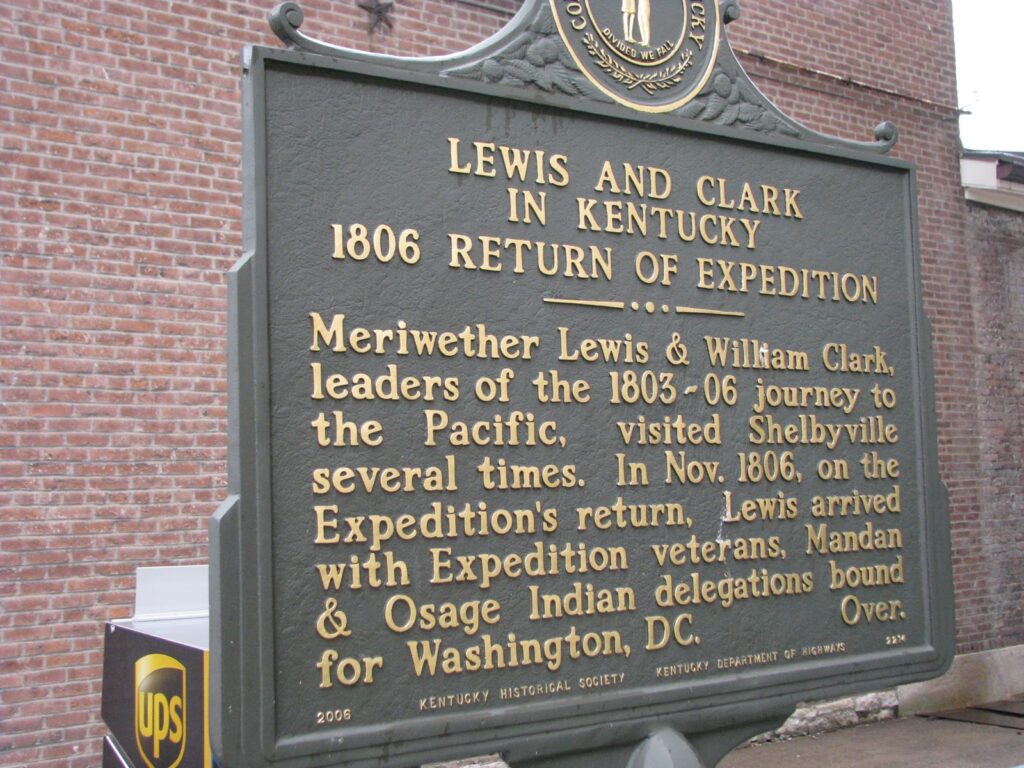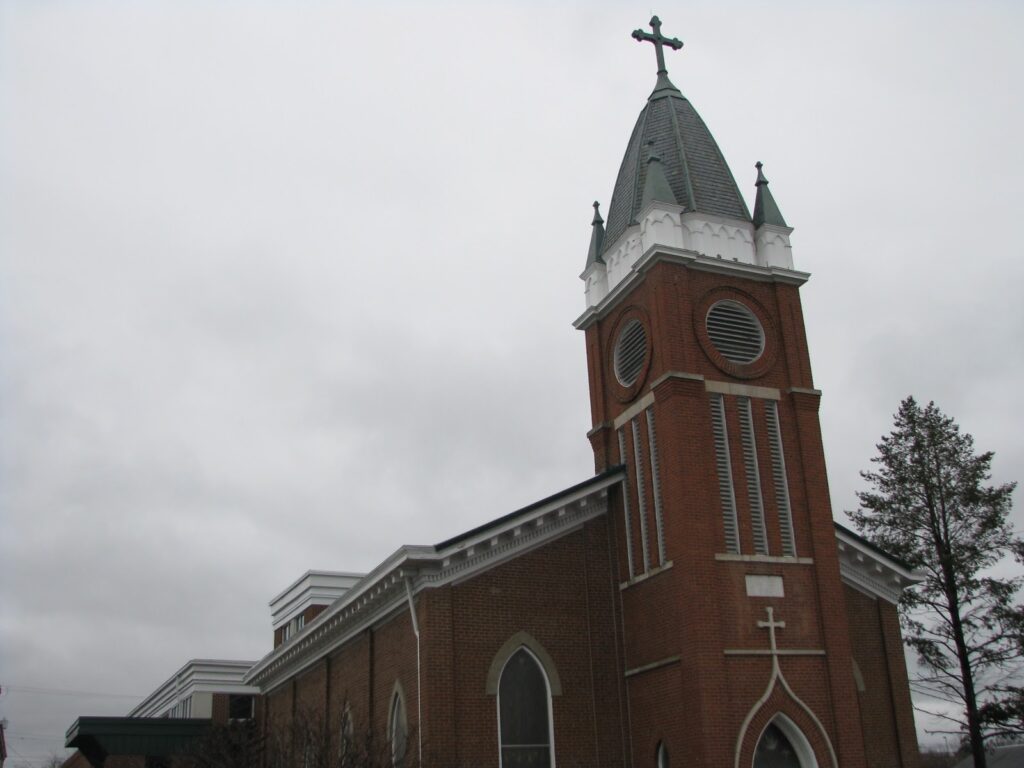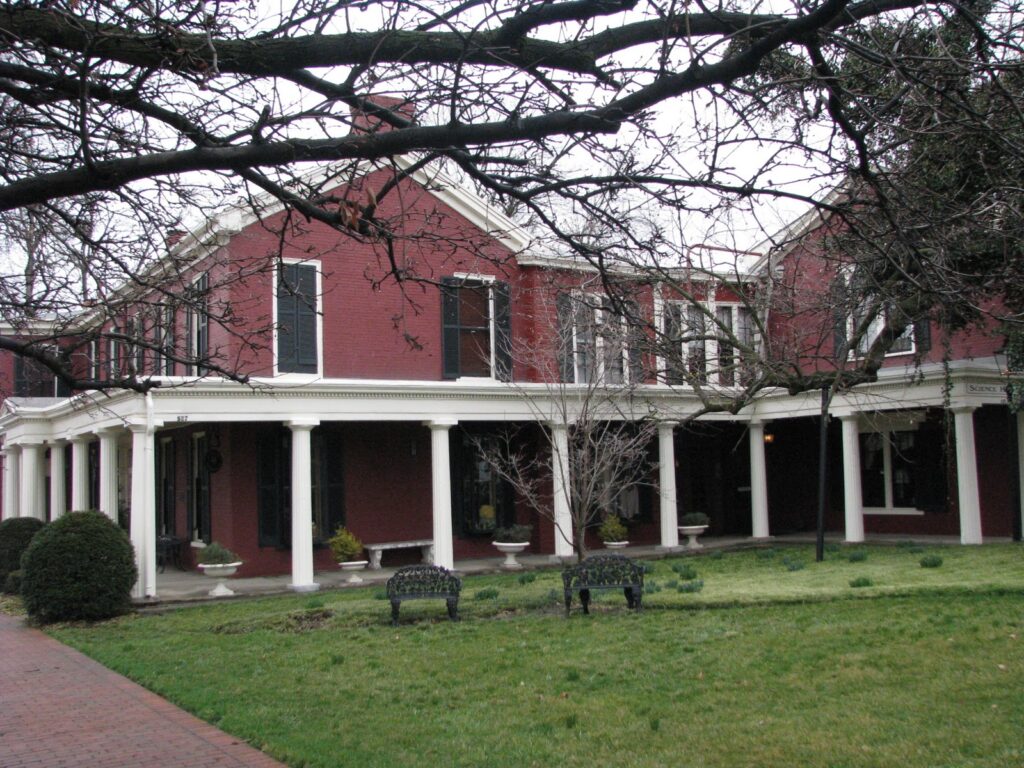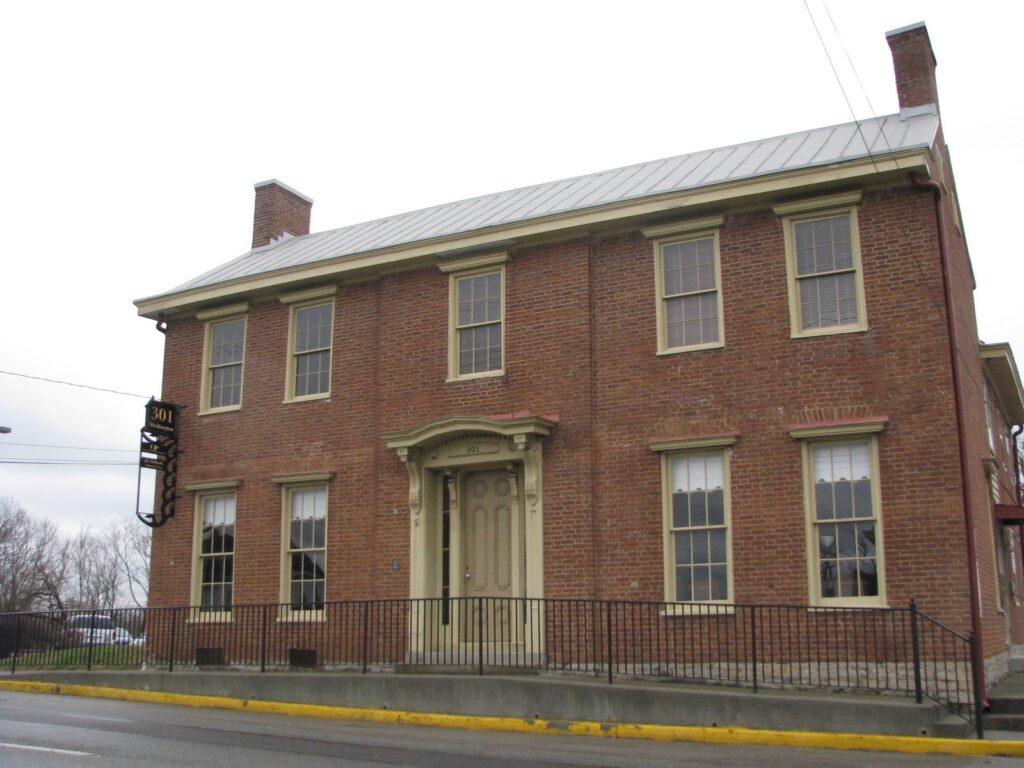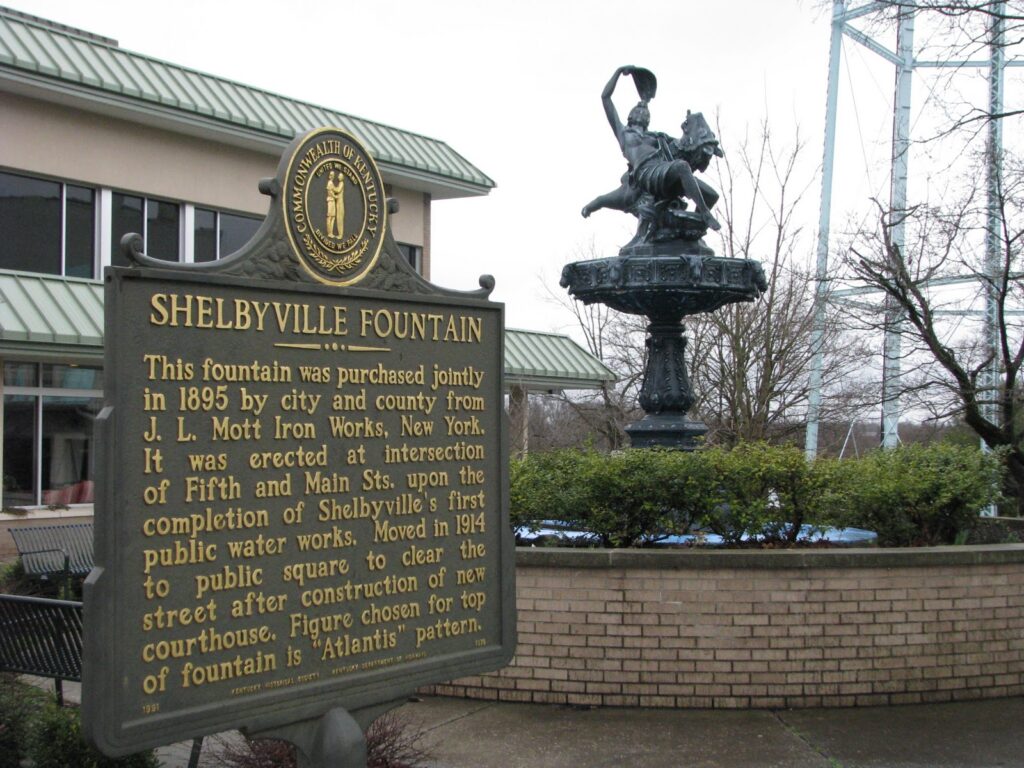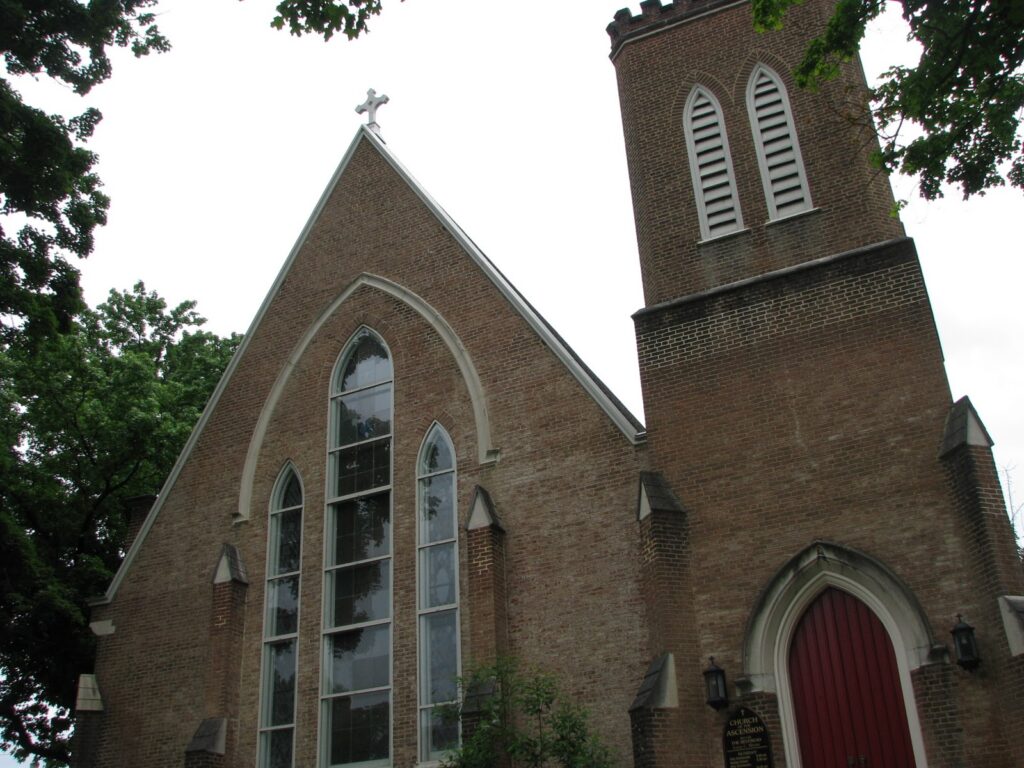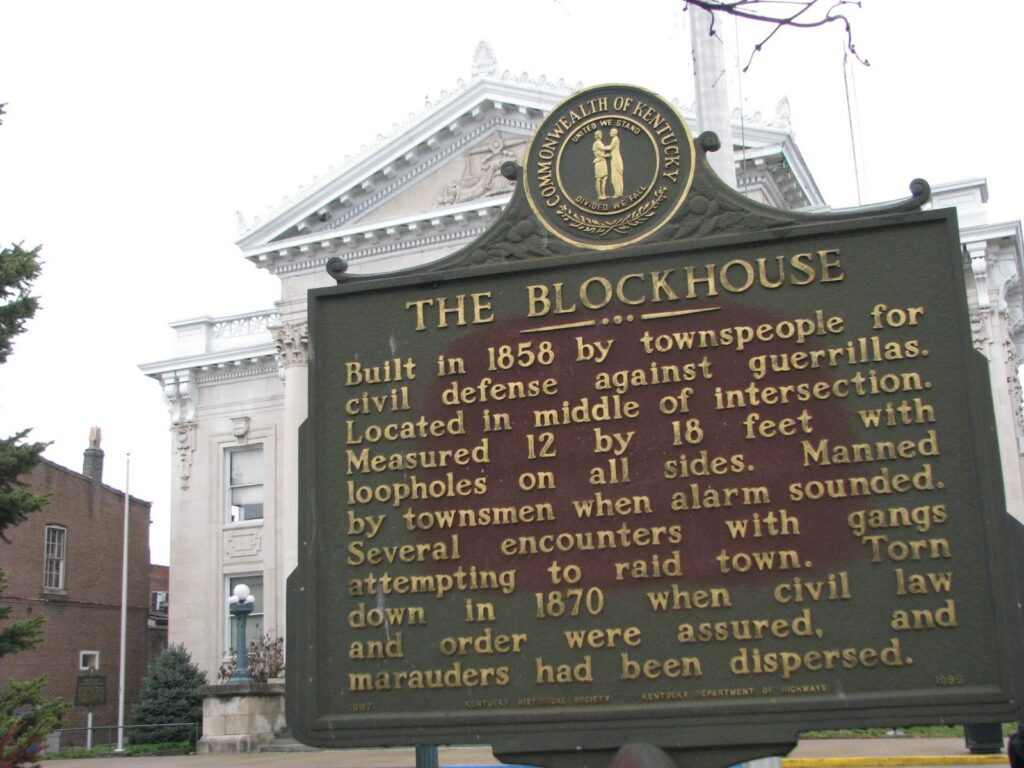 |
| Main Street in historic La Grange, Kentucky |
As Nate alluded to last week, we visited Oldham County’s seat a few weeks ago. Founded in 1827, this community community was not incorporated until 1840. Named for the home of General Lafayette (the Château de la Grange-Bléneau), some suggest that LaGrange is severely haunted and may be part of the so-called “Fayette Factor.” (An anomaly that I’ve discovered and intend on researching at length.).
 |
| DeHaven Baptist Church |
I think what stands out about La Grange is that it remains a thriving community. Despite a population of less than 5,700 (2000 Census), La Grange’s downtown is filled with active and successful businesses. Remarkable for a town of its size, particularly in our current economic downturn. Pictured above is Main Street with several of the businesses visible: Karen’s Book Barn, the Red Pepper Deli and Cafe, the 1887 Corner Store. A great toy store. Unfortunately, we visited on a Sunday and many of the shops were closed.
Several of Kentucky’s towns emphasize history and La Grange certainly counts itself among this class. The Historical Society has preserved churches and other historical structures (its HQ consists of an entire city block!) One of the most architecturally impressive structures is the DeHaven Baptist Church (pictured at right).

